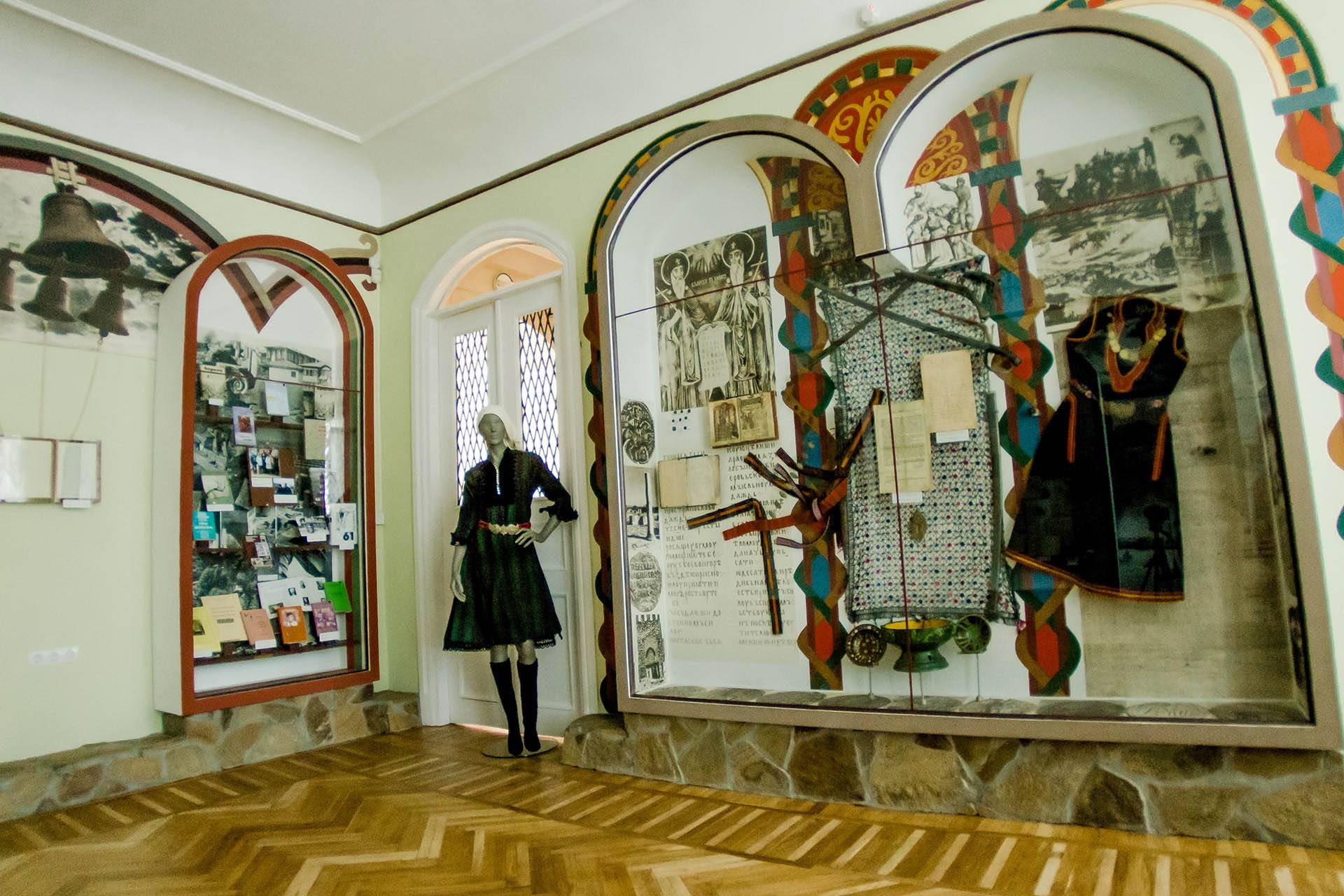The palace of Prince Gagarin
The palace of Prince Gagarin is the two-story building, which houses the Odessa Literary Museum, was built in the late 1850s – early 1860s. The building combines the exterior simplicity of a classic facade with profiled pediments with an eclectic splendor of the interior.

Golden Hall
The decoration of the main hall of the museum used stucco decorative elements covered with gilding. This is the main “memorial” hall of the museum. In 1899 Odessa literary and artistic society was located here, which citizens Ivan Bunin, Mikhail Kropyvnytsky, Vlas Doroshevich, Korney Chukovsky and Vladimir Zhabotinsky were here. In 1900 Mikhail Kropyvnytsky and Maria Zankovetskaya performed here. Numerous materials devoted to the history of the formation of Ukrainian and Russian theaters are presented in the showcases of the hall. Now, paying tribute to good tradition, literary and musical evenings, creative meetings, exhibitions and international literary festivals are held in the Golden Hall.

The beginning of literary history of Odessa. 1794-1870s
The exposition of the hall is dedicated to folklore of the south Ukraine and the beginning of literary history of Odessa. The symbols of the sea, the steppe and folk art are used in the design of the hall. These symbols coexist with the image of a new, actively constructed city.

“Pushkin’s room”. Cultural and literary life of Odessa in 1820s
The interior of the hall resembles the noble literary and aristocratic salons that Odessa was famous for in the 20s of the XIX century. These years were marked by arrival of Pushkin, Batyushkov, Gnedich, Zhukovsky and Mickiewicz to our city.

“First grape room”. Literature life of Odessa in 1830-1840s
The hall is decorated in a manner of a bookstore, which became popular in the city at that time. During these years, writers Nikolai Gogol, Nikolai Nadezhdin, Yakov Polonsky, Jozef Ignati Kraszewski and Teodor Tomasz Jeż visited Odessa.

“The second grape room”. Public and literature life of Odessa in 1850-1860s
The exposition of the hall tells about the events in public and literary life in Odessa in the 1850-60s. The literary chronicle of Odessa was enriched by the names of Leo Tolstoy, Aleksey Tolstoy, Ivan Aksakov, Nicolay Dobrolyubov. Nicolay Pirogov headed Odessa educational authority in these years.

“Green fireplace room”. Literature life of Odessa in 1870-1890s
The exposition of the hall is dedicated to writers who are considered to be the treasure of Russian, Ukrainian, Jewish, Armenian, Latvian culture. Vladimir Korolenko, Ivan Nechuy-Levytsky and Petro Nishchynsky, Dniprova Chaika and Nikolai Garin-Mikhailovsky, Mendele Mocher-Sforim and Sholem Aleichem, Avetik Isaakyan and Alexander Shirvanzade, Andrejs Pumpurs and Gleb Uspensky worked in Odessa.
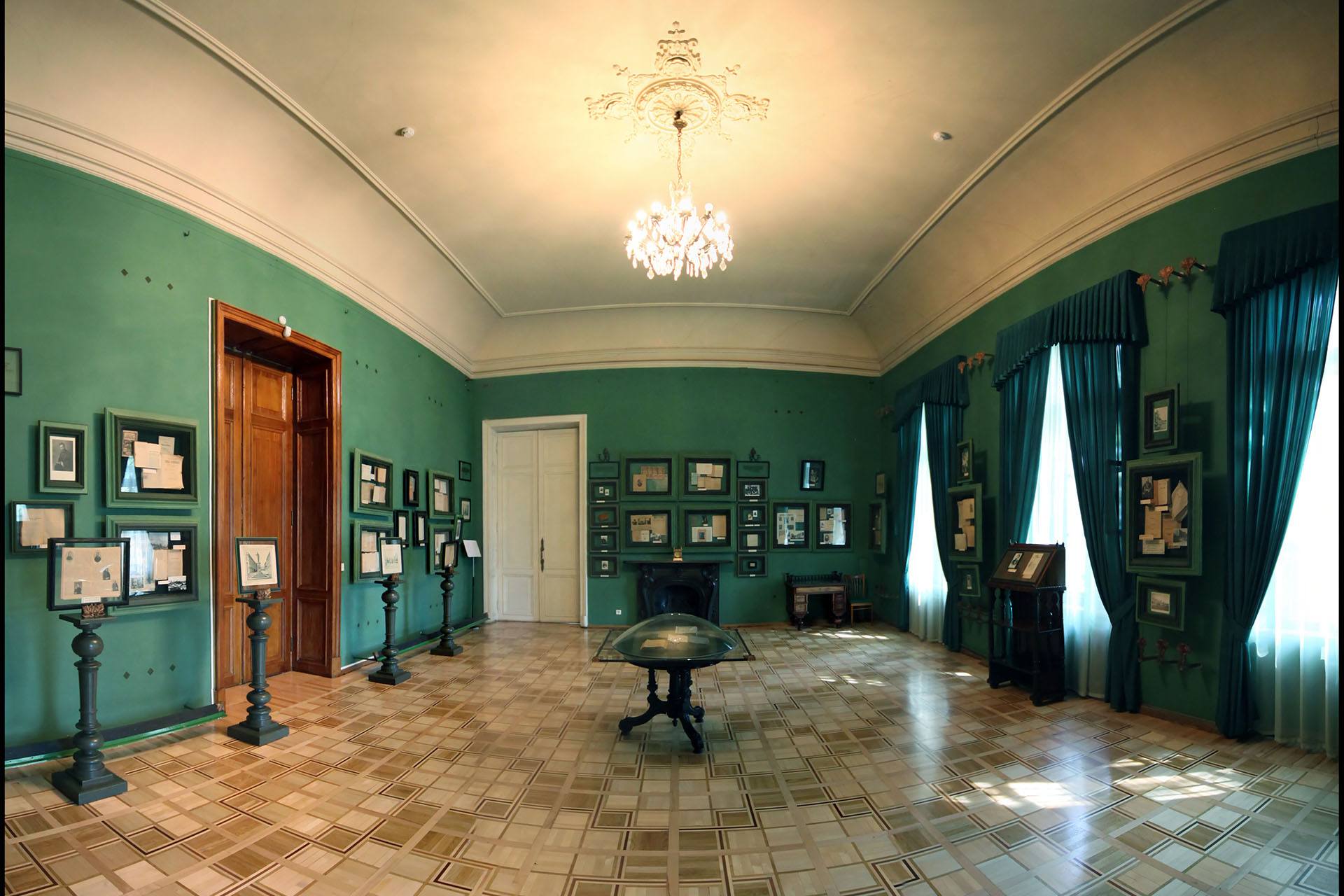
Journalistic hall
The exposition of the hall is dedicated to the development of journalism and book publishing in Odessa. The hall is made in the form of a photo collage and attributes of the reporter profession. At that time, Vlas Doroshevich, Korney Chukovsky, Alexander de Ribas, Semen Herzo-Vinogradsky worked in Odessa. The books printed in Fesenko printing house were known far beyond the borders of our city.
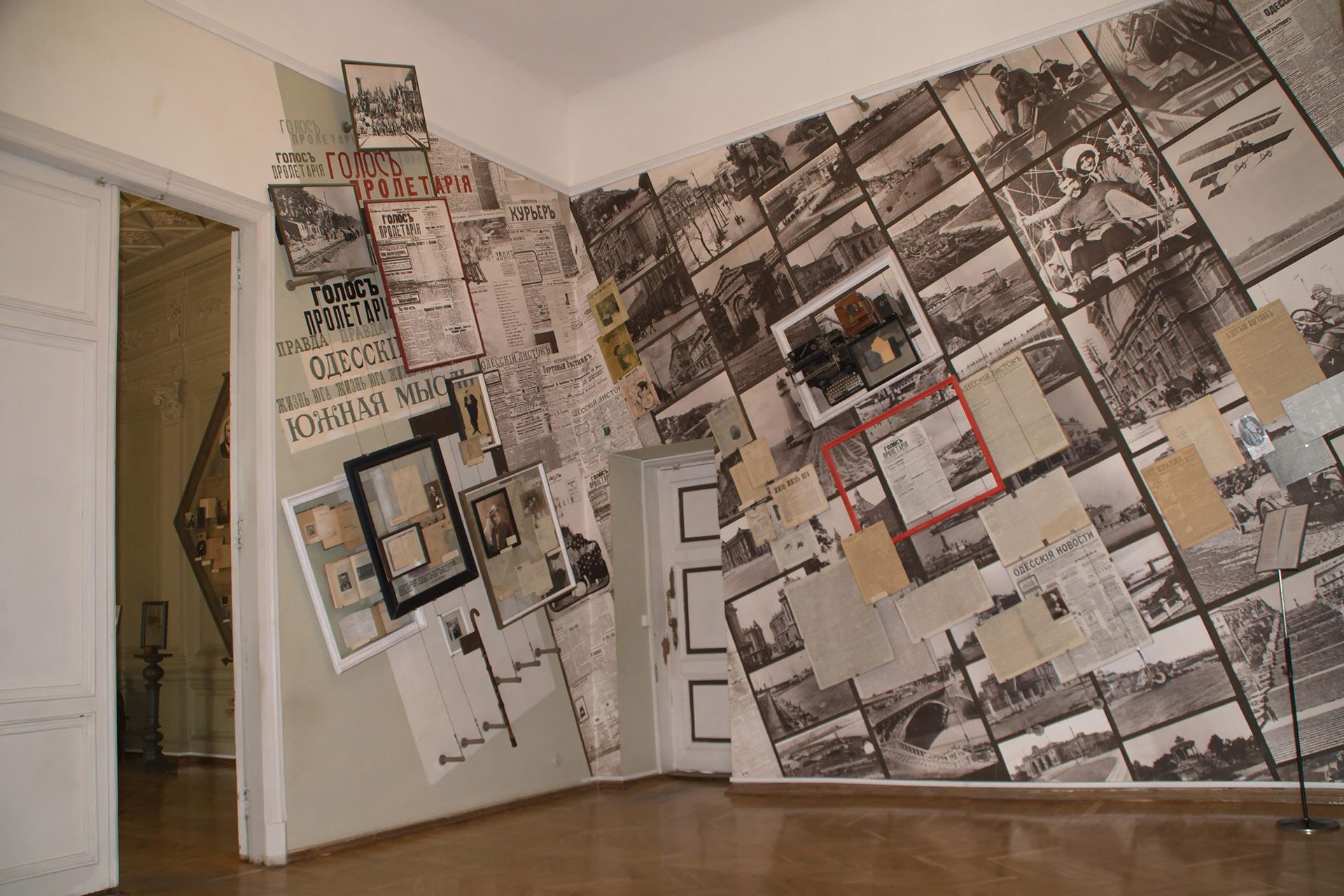
“The Hunting room”. Anton Chekhov, Aleksandr Kuprin, Ivan Bunin in Odessa
The “Hunting Room” is decorated with pylons with embossed capitals and a bas-relief frieze with images of birds of prey and the heads of hunting dogs. Its exposition tells about the numerous visits of famous writers Anton Chekhov, Aleksandr Kuprin and Ivan Bunin to Odessa.
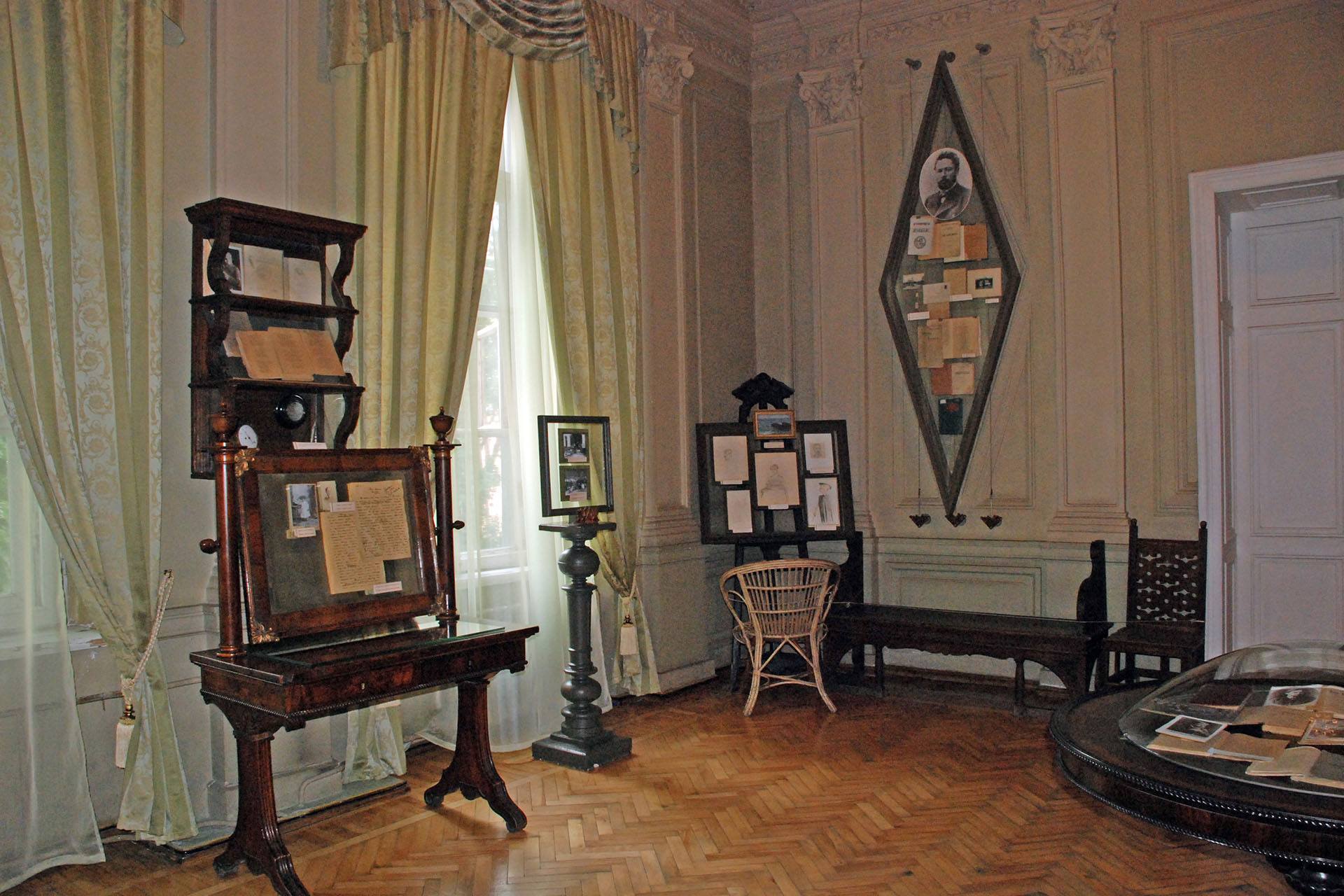
The hall of literature of 1894-1905
The design of the hall combines images of a large marine pre-revolutionary city and a difficult, full of hardships life of its citizens. The exposition tells about arrivals of Lesya Ukrainka, Mikhail Kotsiubynsky, Ivan Franko, Maxim Gorky, Lazar Carmen and other writers of this era.
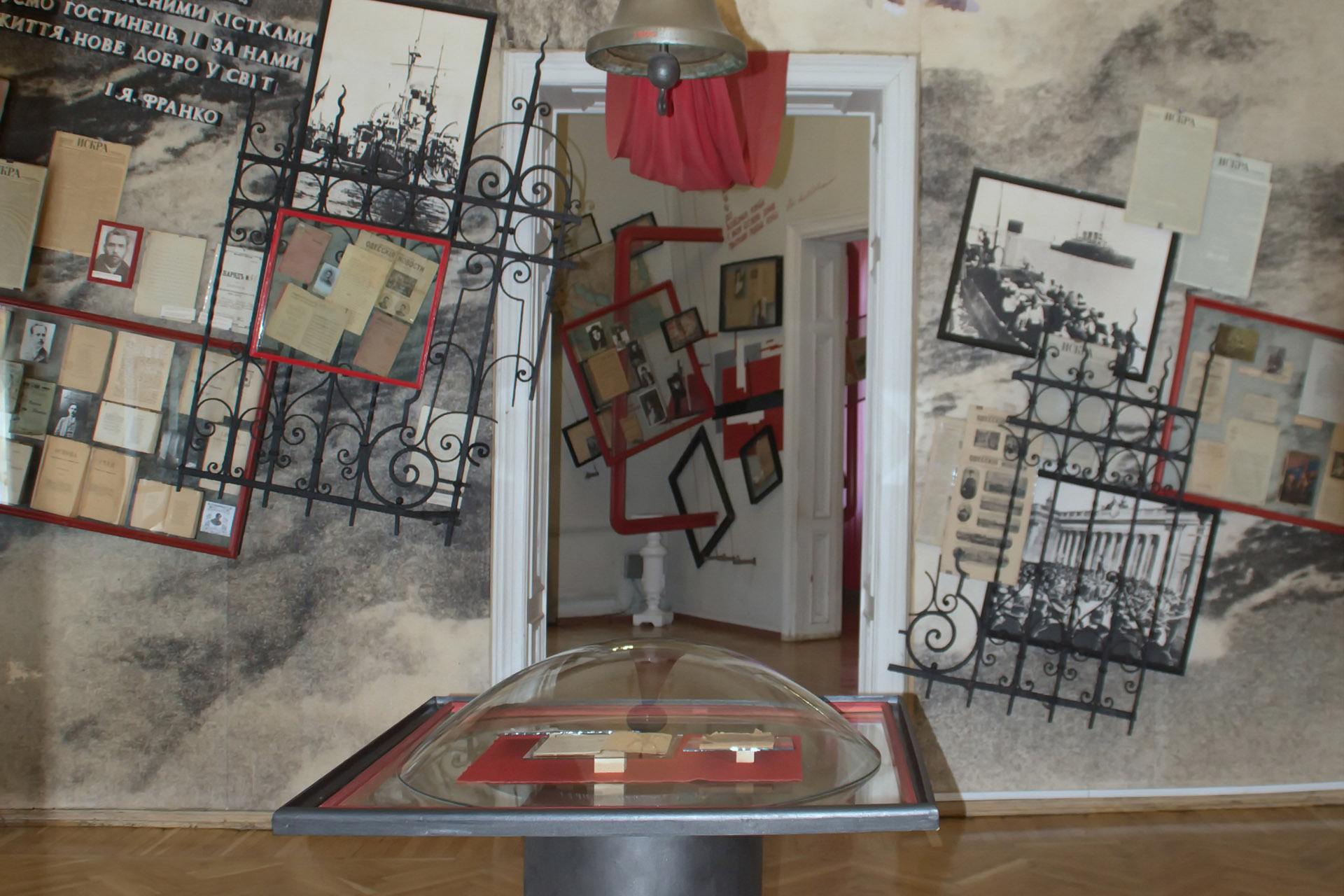
“Triangular room”. Hall of Silver Age literature
The “Triangular Room” is designed according to the style diversity typical for the beginning of the 20th century. The showcases show the visits to Odessa of Leonid Andreev, Anna Akhmatova, Nikolay Gumilyov, Konstantin Balmont, Andrei Bely, Sasha Cherny, Igor Severyanin, Vladimir Mayakovsky, David Burliuk and other.
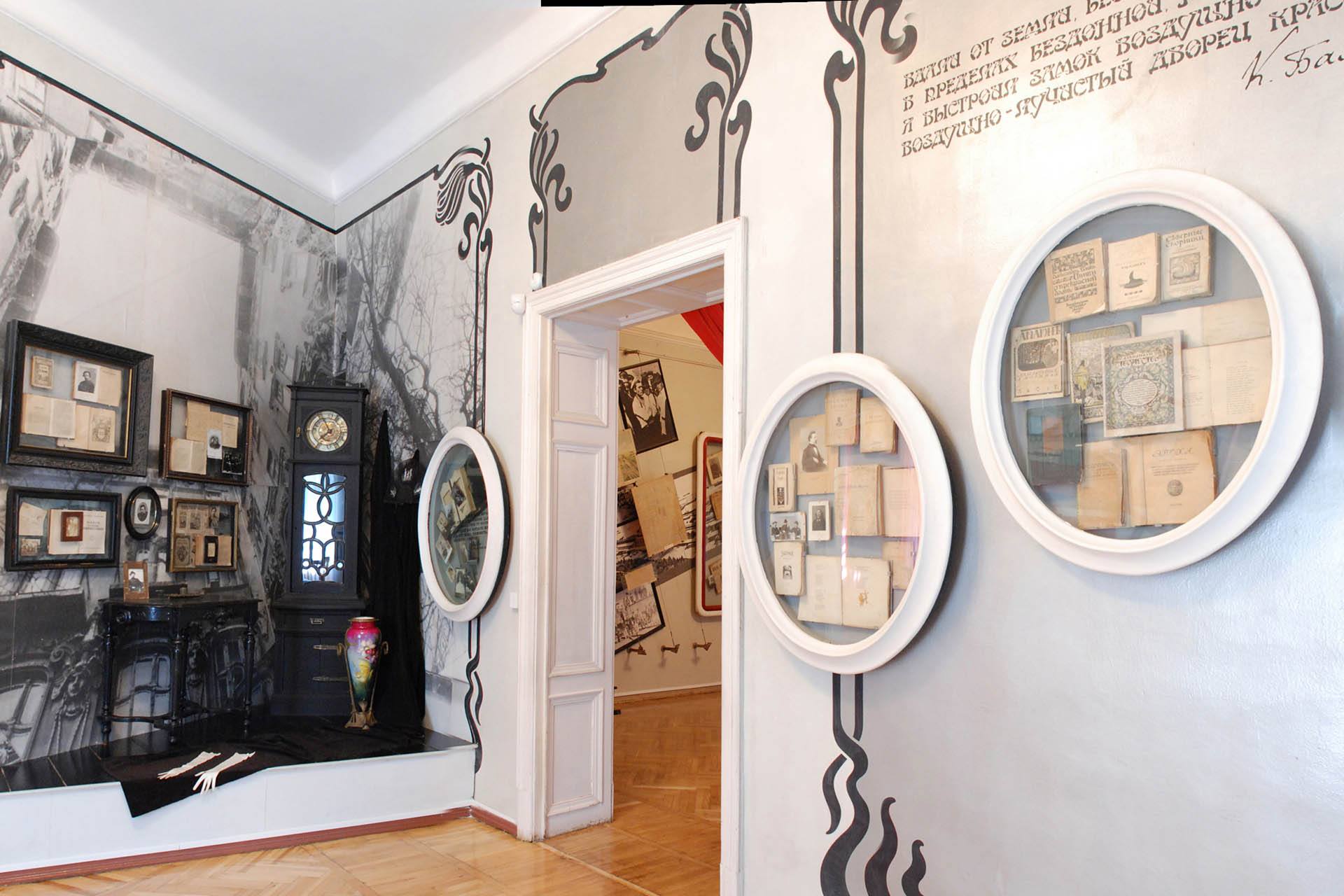
Literary life in Odessa in 1917-1920s
The main motive of the exposition of this hall is the origin and development of Odessa southwestern literary school during the revolution and civil war. Odessa literary associations played a significant role in the formation of such writers as Yury Olesha, Eduard Bagritsky, Valentin Kataev.
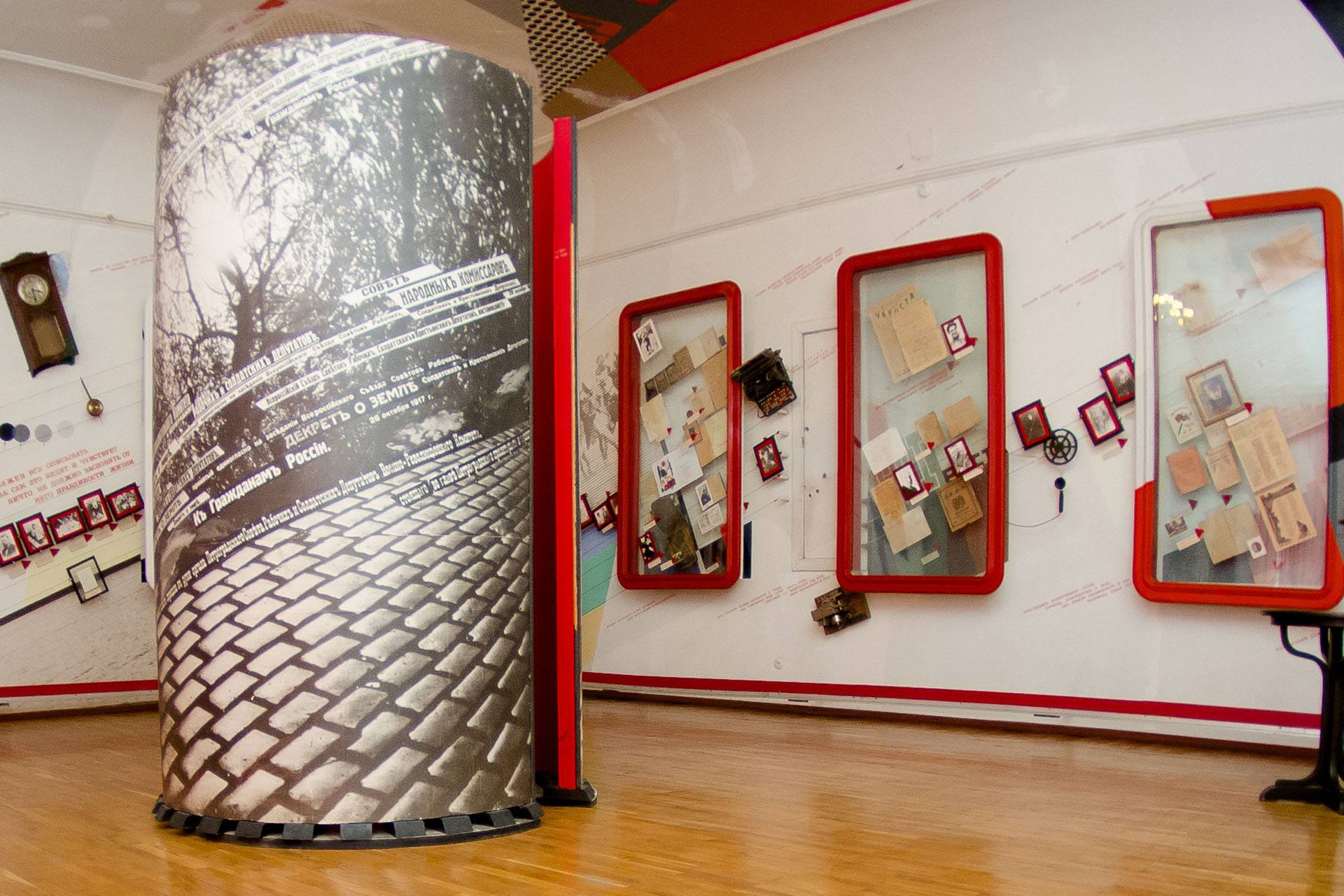
“Time of great expectations”. Literary life in Odessa in early 1920s
The exposition of the hall tells about the heyday of the southwestern literary school. It’s dedicated to Isaac Babel, Ilya Ilf and Evgeny Petrov, Konstantin Paustovsky and the famous newspaper “The Sailor”, Vera Inber, a frequent guest of Odessa and Volodymyr Sosiura a member of the Poet Collective.
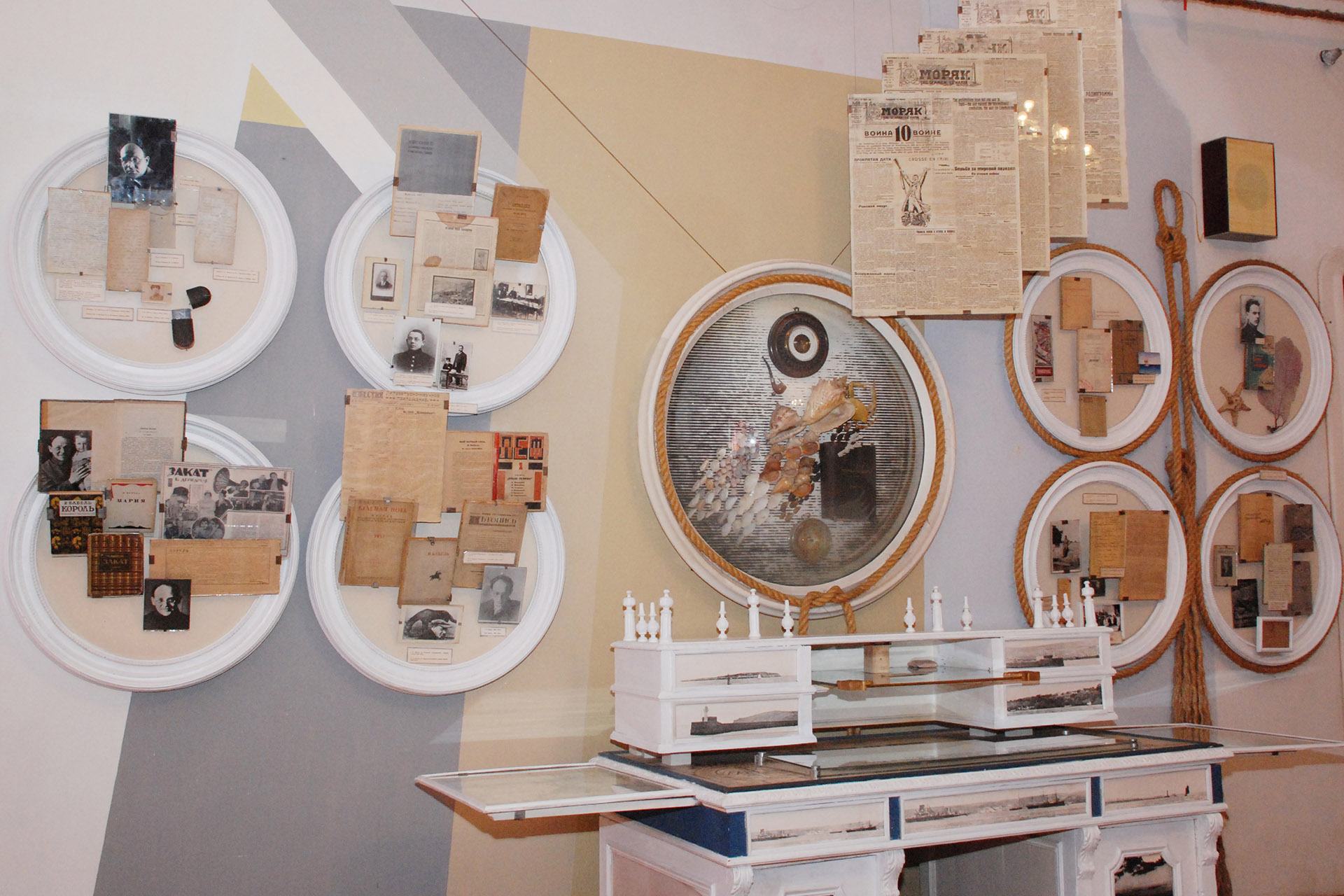
Literary life in Odessa in 1925-1930s
The photo collage on the wall takes us into the contradictory atmosphere of “the everyday life of great construction projects” and great terror. During these years the literary associations “Yugolef”, “Streams of October”, “Gart”, “Young Guard” and “Stank” appeared, and Eduard Bagritsky, Semyon Kirsanov, Leonid Nedolya-Goncharenko, Sergey Bondarin and others became active participants in the literary life of Odessa.
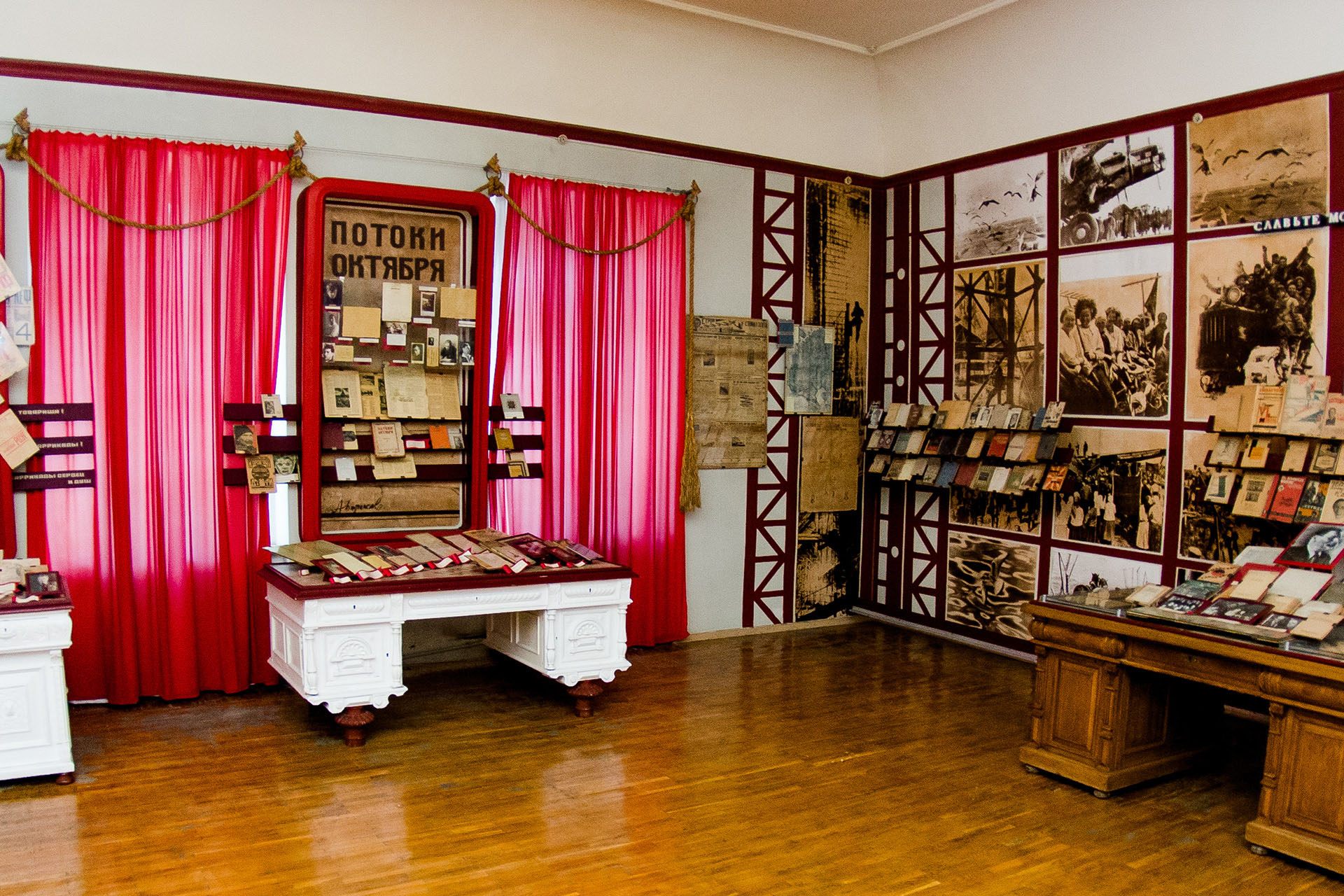
“The Arrivals hall”. Creative contacts of Odessa writers. 1920-1930s.
The showcases of the “Arrivals Hall” are decorated in the form of train windows. It is dedicated to writers of the 20-30s of XX century, who were accepted and loved in our city. Among the names there are Pavlo Tychyna, Ostap Vyshnya, Boris Lavrenev, Maxim Rylsky, Vsevolod Ivanov and Boris Pilnyak, Musa Jalil, as well as modernist artist Mikhail Zhuk
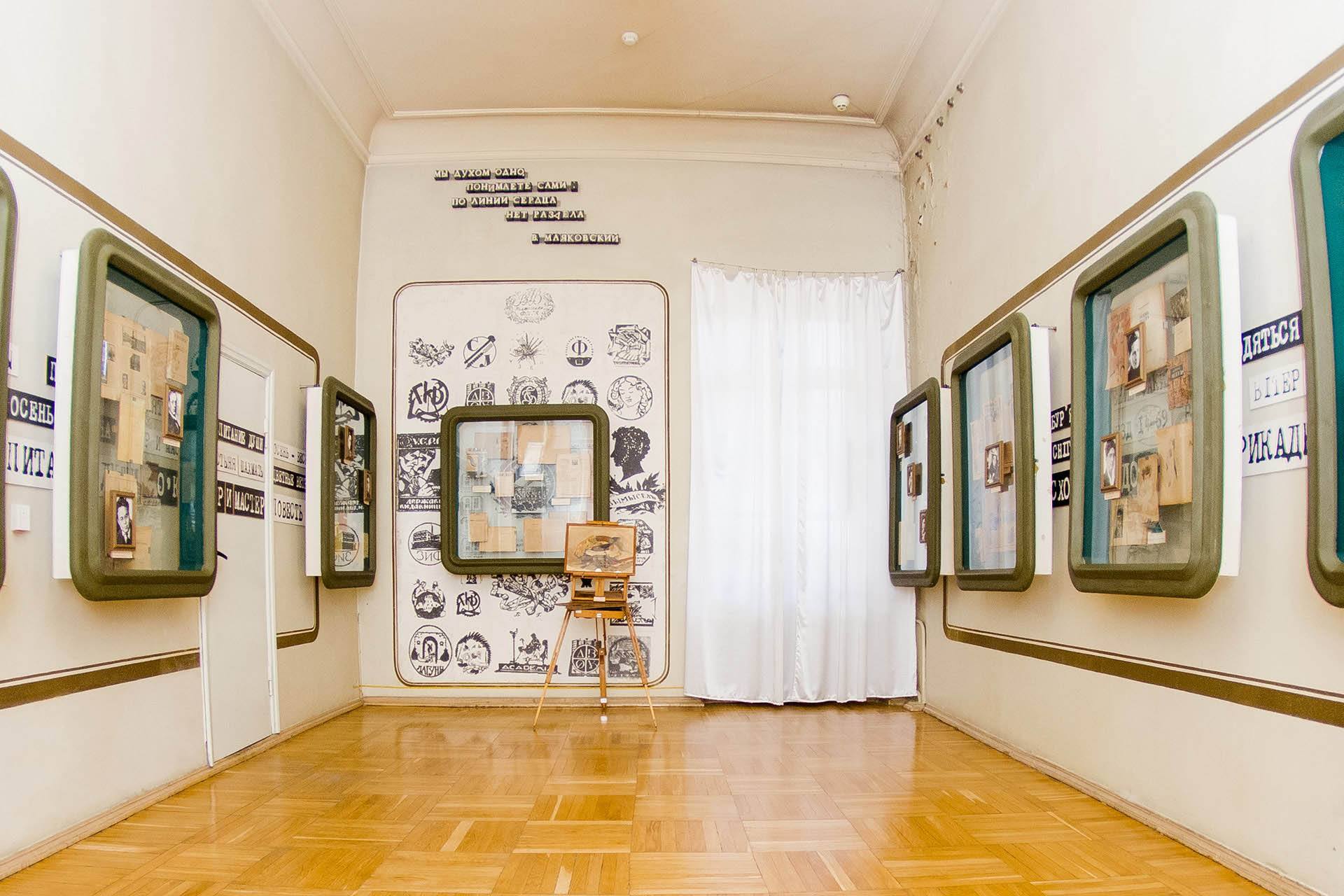
“The room of cinema and theatre”. The enhancing of drama, theatre and cinema in Odessa in 1920-1930s.
The design used elements of the stage and the cinema: curtain, podium, piano, symbolic cinema screen. The exposition of the hall tells about the links of literature with the theater and cinema, about the activities of Odessa State Drama Theater and Odessa Film Factory, about the actors of the theater and cinema who were working in Odessa in these years: Ivan Mikitenko, Mikola Kulish, Les Kurbas, Alexander Dovzhenko, Yuri Yanovsky.
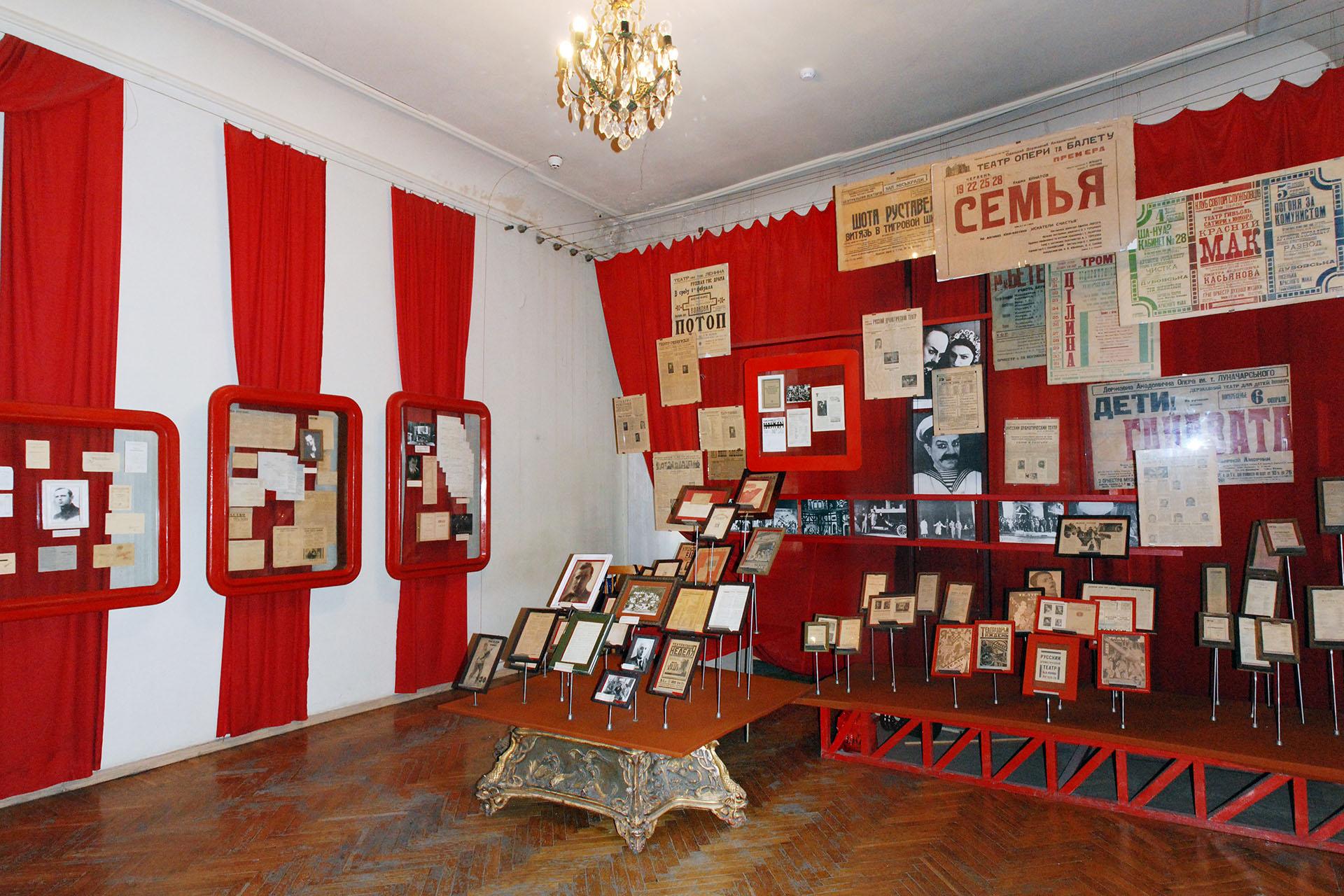
“Spanish room”. The theme of antifascism in literature, repressions in 1930s
The red and black design of the hall, dominated by a huge photo collage from fragments of works of great Spanish artists El Greco, Goya, Picasso, reflects the alarming atmosphere of 1930s, the approach of fascism and repression.
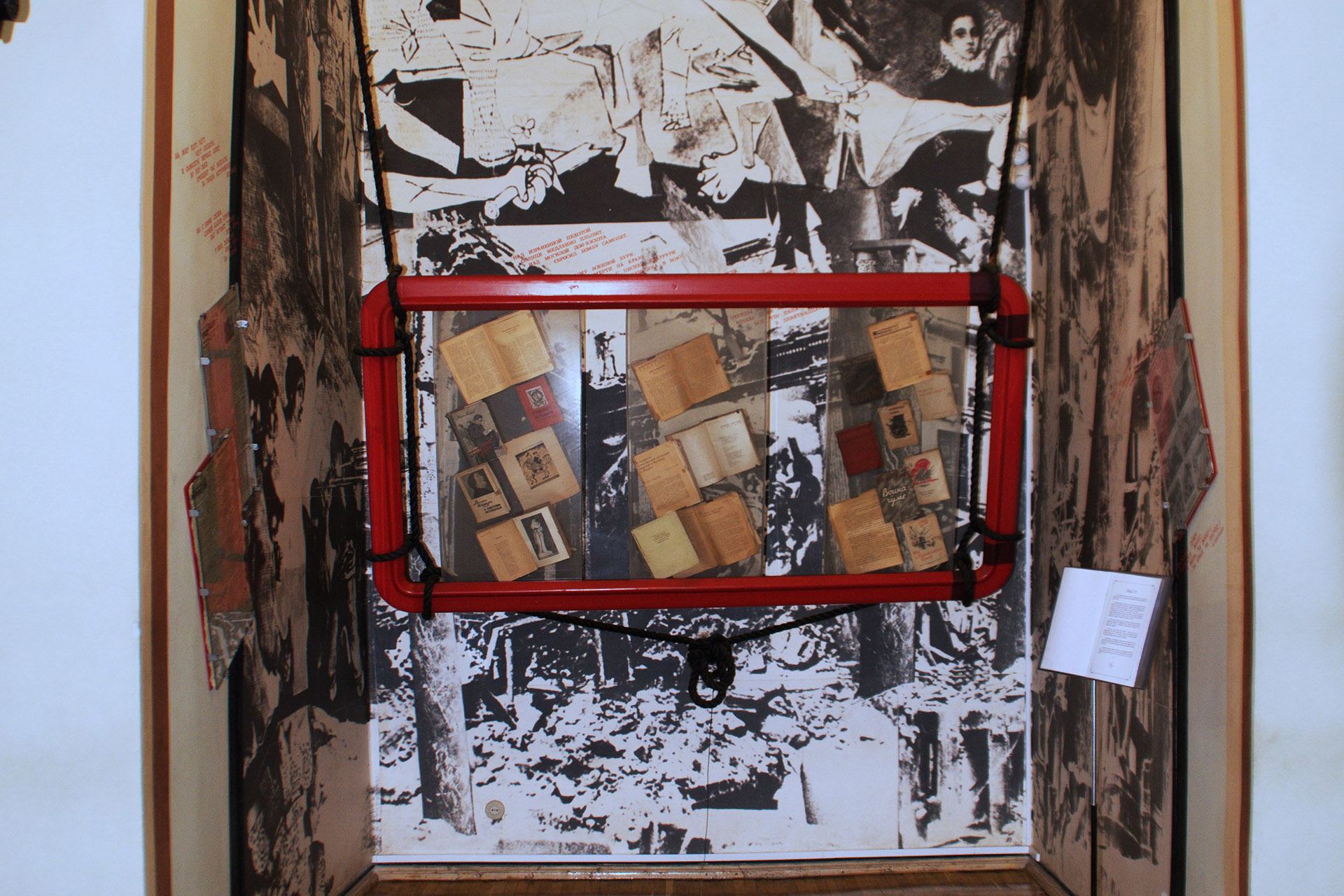
“There is a city, I see in my dream”. Cultural and literary life in Odessa in post-war period (1945-1990s)
The epigraph of the hall completing the exposition of the second floor are the words of a popular song “There is a city that I see in my dream …”. The lyric was written by Semyon Kirsanov. The creative activity of the writers who were born in Odessa or who visited city at different times, reflected brightly in the cultural life.
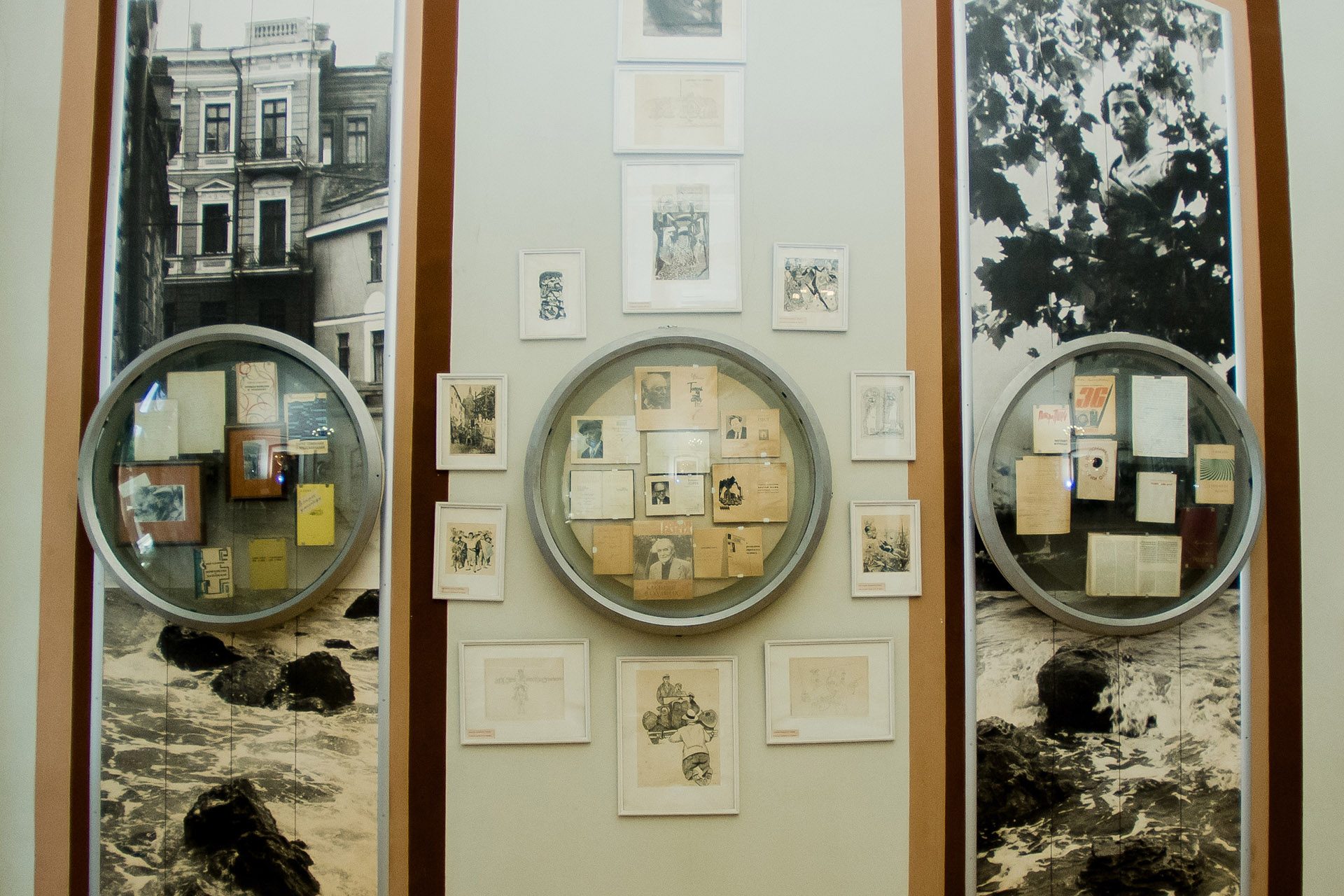
Hall of Literature in 1941-1944
In the design of the halls devoted to the defense, occupation and liberation of Odessa, photo enlargements, monumental painting and relics of the war years are used: anti-tank hedgehogs, soldier’s flasks. Konstantin Simonov, Leonid Sobolev, Sergey Bondarin, Grigori Pozhenyan, Konstantin Paustovsky, Illya Frenkel. Also Heinrich Böll visited besieged Odessa.
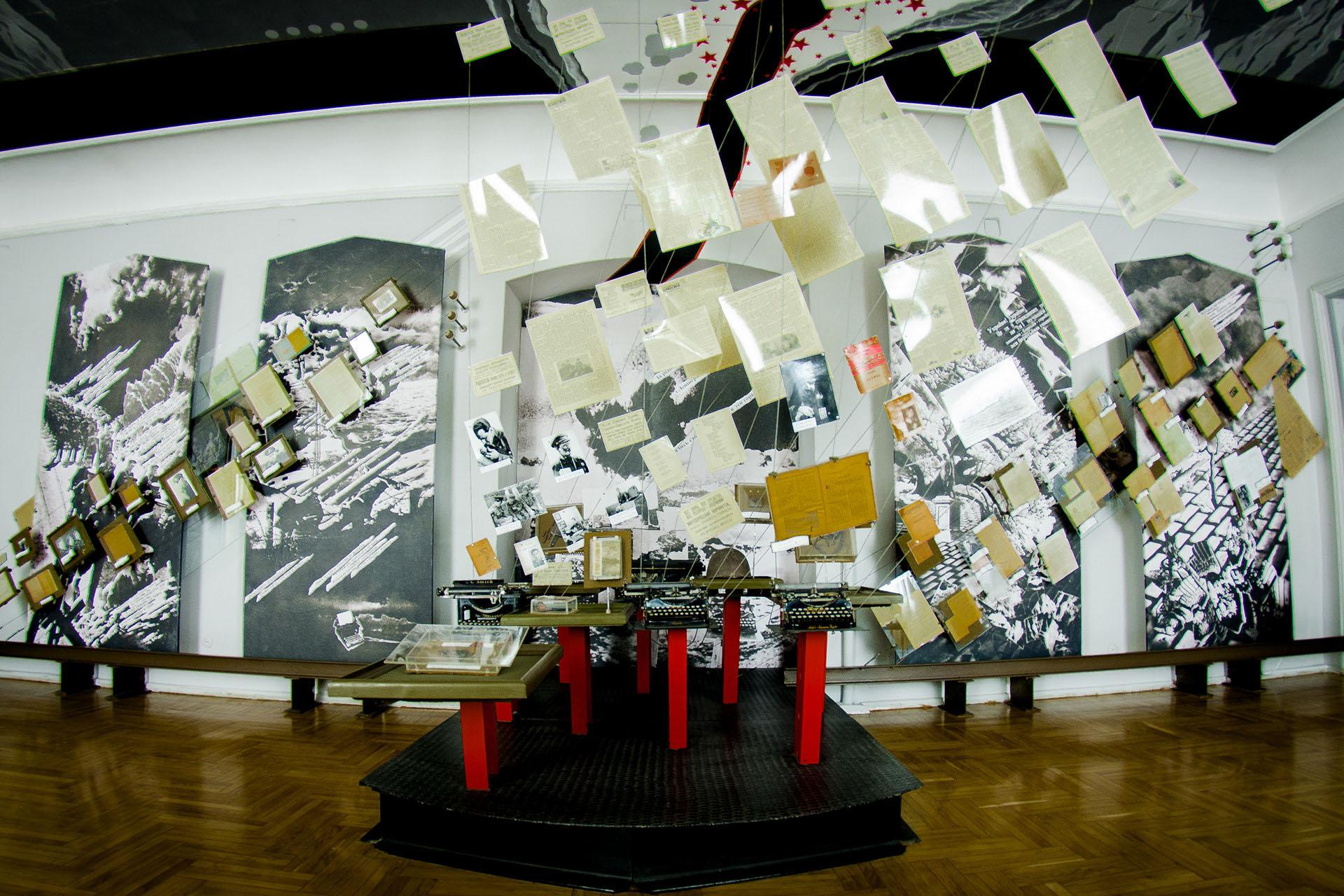
The Hall of Bulgarian Literature
The hall is dedicated to Bulgarian literature. It is decorated with traditional national ornaments, photo collages with views of Odessa and Bulgaria at the beginning of the 20th century. Georges Stoykov Rakovsky Odessa, Ivan Vazov and Aleko Konstantinov lived in, Hristo Botev studied at gymnasium. After the revolution, Bulgaria became a new home for Odessa writer Alexander Fedorov, the artist Pyotr Nilus, and the historian Pyotr Bitsilli.
